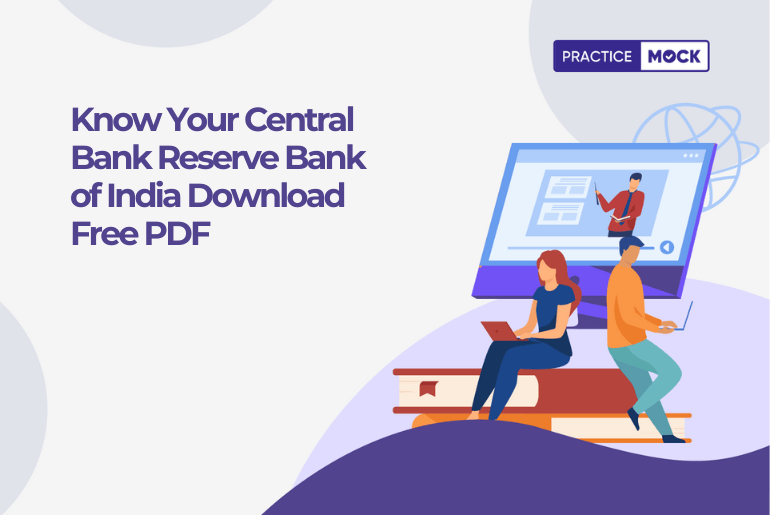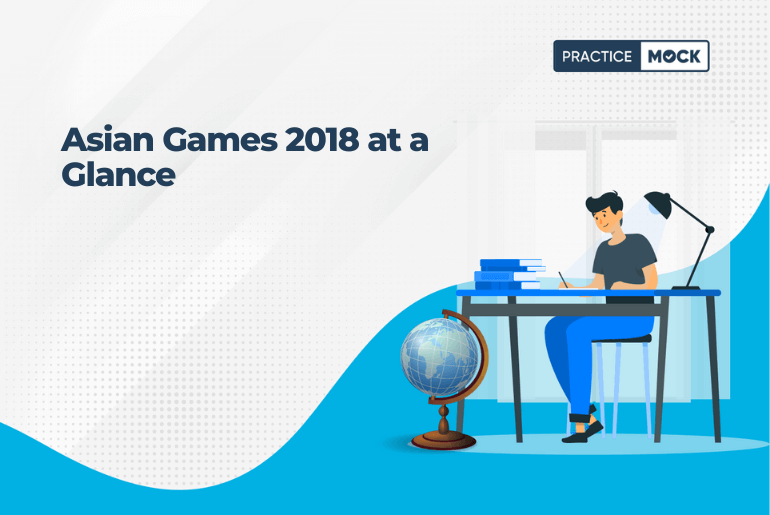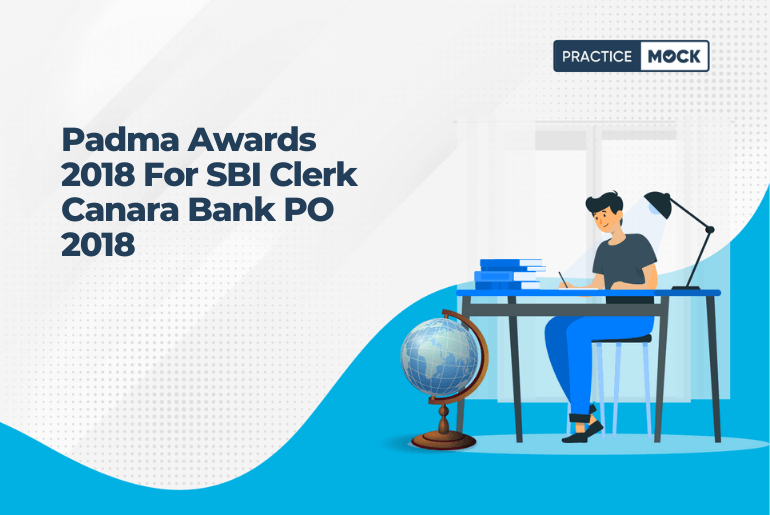

Know Your Central Bank: Reserve Bank of India
Introduction
The Reserve Bank of India is the central bank of the country entrusted with monetary stability, the management of currency and the supervision of the financial as well as the payments system.
Its functions comprise monetary management, foreign exchange and reserves management, government debt management, financial regulation and supervision, apart from currency management and acting as banker to the banks and to the Government. In addition, from the beginning, the Reserve Bank has played an active developmental role, particularly for the agriculture and rural sectors. Over the years, these functions have evolved in tandem with national and global developments.
Establishment
The Reserve Bank of India was set up with a paid-up capital of Rs. 5 Crore on the basis of the recommendations of the Hilton Young Commission. The Reserve Bank of India Act, 1934 (II of 1934) provides the statutory basis of the functioning of the Bank, which commenced operations on April 1, 1935.
The Central Office of the Reserve Bank was initially established in Kolkata but was permanently moved to Mumbai in 1937. The Central Office is where the Governor sits and where policies are formulated.
The Reserve Bank of India was nationalised in 1949, and it is fully owned by the Government of India.
Preamble
The Preamble of the Reserve Bank of India describes the basic functions of the Reserve Bank as:
“to regulate the issue of Bank notes and keeping of reserves with a view to securing monetary stability in India and generally to operate the currency and credit system of the country to its advantage; to have a modern monetary policy framework to meet the challenge of an increasingly complex economy, to maintain price stability while keeping in mind the objective of growth.”
Organisation Structure
Central Board
The Reserve Bank’s affairs are governed by a central board of directors. The board is appointed by the Government of India in keeping with the Reserve Bank of India Act.
- Appointed/nominated for a period of four years
- Constitution:
o Official Directors
§ Full-time : Governor and not more than four Deputy Governors
o Non-Official Directors
§ Nominated by Government: ten Directors from various fields and two government Official
§ Others: four Directors – one each from four local boards
Functions of Central Board: General superintendence and direction of the Bank’s affairs
Local Boards
· One each for the four regions of the country in Mumbai, Kolkata, Chennai and New Delhi
· Membership:
· consist of five members each
· appointed by the Central Government
· for a term of four years
Functions of Local Board: To advise the Central Board on local matters and to represent territorial and economic interests of local cooperative and indigenous banks; to perform such other functions as delegated by Central Board from time to time.
Main Functions of Reserve Bank of India
1. Monetary Authority:
- Formulates, implements and monitors the monetary policy.
- Objective: maintaining price stability while keeping in mind the objective of growth.
2. Regulator and supervisor of the financial system:
- Prescribes broad parameters of banking operations within which the country’s banking and financial system functions.
- Objective: maintain public confidence in the system, protect depositors’ interest and provide cost-effective banking services to the public.
3. Manager of Foreign Exchange
- Manages the Foreign Exchange Management Act, 1999.
- Objective: to facilitate external trade and payment and promote orderly development and maintenance of foreign exchange market in India.
4. Issuer of currency:
- Issues and exchanges or destroys currency and coins not fit for circulation.
- Objective: to give the public adequate quantity of supplies of currency notes and coins and in good quality.
5. Developmental role
- Performs a wide range of promotional functions to support national objectives.
6. Regulator and Supervisor of Payment and Settlement Systems:
- Introduces and upgrades safe and efficient modes of payment systems in the country to meet the requirements of the public at large.
- Objective: maintain public confidence in payment and settlement system
7. Related Functions
- Banker to the Government: performs merchant banking function for the central and the state governments; also acts as their banker.
- Banker to banks: maintains banking accounts of all scheduled banks.
Board for Financial Supervision
The Reserve Bank of India performs the supervisory function under the guidance of the Board for Financial Supervision (BFS). The Board was constituted in November 1994 as a committee of the Central Board of Directors of the Reserve Bank of India under the Reserve Bank of India (Board for Financial Supervision) Regulations, 1994.
Objective
The primary objective of BFS is to undertake consolidated supervision of the financial sector comprising Scheduled Commercial and Co-operative Banks, All India Financial Institutions, Local Area Banks, Small Finance Banks, Payments Banks, Credit Information Companies, Non-Banking Finance Companies and Primary Dealers.
Constitution
The Board is constituted by co-opting four Directors from the Central Board as Members and is chaired by the Governor. The Deputy Governors of the Reserve Bank are ex-officio members. One Deputy Governor, traditionally, the Deputy Governor in charge of supervision, is nominated as the Vice-Chairman of the Board.
BFS Meetings
- The Board is required to meet normally once every month. It deliberates on inspection reports, periodic reviews related to banking and non-banking sectors and policy matters arising out of or having relevance to the supervisory functions of the Reserve Bank.
- The BFS oversees the functioning of Department of Banking Supervision (DBS), Department of Non-Banking Supervision (DNBS) and Department of Co-operative Bank Supervision (DCBS) and gives directions on regulatory and supervisory issues.
Functions
Some of the initiatives taken by the BFS include:
1) Fine-tuning the supervisory processes adopted by the Bank for regulated entities;
2) Introduction of off-site surveillance system to complement the on-site supervision of regulated entities;
3) Strengthening the statutory audit processes of banks and enlarging the role of auditors in the supervisory process;
4) Strengthening the internal defences within supervised institutions such as corporate governance, internal control and audit functions, management information and risk control systems, review of housekeeping in banks;
5) Introduction of supervisory rating system for banks and financial institutions;
6) Supervision of overseas operations of Indian banks, consolidated supervision of banks;
7) Technical assistance programme for cooperative banks;
8) Introduction of scheme of Prompt Corrective Action Framework for weak banks;
9) Guidance regarding fraud risk management framework in banks;
10) Introduction of risk based supervision of banks;
11) Introduction of an enforcement framework in respect of banks;
12) Establishment of a credit registry in respect of large borrowers of supervised institutions; and
13) Setting up a subsidiary of RBI to take care of the IT requirements, including the cyber security needs of the Reserve Bank and its regulated entities, etc.
Board for Regulation and Supervision of Payment and Settlement Systems (BPSS)
The Board for Regulation and Supervision of Payment and Settlement Systems provides an oversight and direction for policy initiatives on payment and settlement systems within the country. The Reserve Bank Governor is the Chairman of the BPSS, while two Deputy Governors, three Directors of the Central Board and some permanent invitees with domain expertise are its members. The BPSS lays down policies for regulation and supervision of payment and settlement systems, sets standards for existing and future systems, authorizes such systems, and lays down criteria for their membership.
Offices of RBI
- Has 27 regional offices, most of them in state capitals and 04 Sub-offices.
Training Establishments
RBI has six training establishments.
- Three, namely, RBI Academy, College of Agricultural Banking and Reserve Bank of India Staff College are part of the Reserve Bank.
- Others are autonomous, such as, National Institute for Bank Management, Indira Gandhi Institute for Development Research (IGIDR), Institute for Development and Research in Banking Technology (IDRBT)
Annual Report
The annual report is a statutory report of the RBI and is released every year in August.
It is a report of the Central Board of Directors of the Reserve Bank to the Central Government of India and includes
- an assessment and prospects of the Indian economy;
- a review of the state of the economy;
- the working of the Reserve Bank during the year;
- the Reserve Bank’s vision and agenda for the following year; and
- the annual accounts of the Reserve Bank (July – June).
Monetary Policy Report
The first issue of the Reserve Bank’s Monetary Policy Report was placed in public domain on September 30, 2014. Now the Report will be released along with the First (generally announced in April) and the Fourth Bi-Monthly Monetary Policy (generally announced in October) Statements each year. It has all data/inputs that go into the formulation of monetary policy – the internal macroeconomic assessment and results of surveys – as also projections of growth and inflation over a short to medium term.
Financial Stability Report
The Reserve Bank of India published the first Financial Stability Report (FSR) in March 2010. To be published every six months, these reports are an attempt at institutionalising the implicit focus and making financial stability an integral driver of the policy framework.
In general, Financial Stability Reports focus on reviewing the nature, magnitude and implications of risks that have bearing on the macroeconomic environment, financial institutions, markets and infrastructure. They also assess the resilience of the financial sector through stress tests.
The Reserve Bank of India Museum:
The Reserve Bank of India Museum is located in Kolkata. The Museum provides you one-of-a-kind experience that explains the money, its role in the economy and your role in it, in a fun and interactive way.
In RBI Museum, you can also explore how money has evolved over the centuries, how and why gold still holds an important place in our society and also about the genesis of RBI.
Reserve Bank of India Emblem
The emblem of Reserve Bank of India has Royal Bengal tiger standing in front of a palm tree. The tiger was referred from the statue at the gate of Belvedere, Kolkata. These are ensconced by ‘भारतीय रिजर्व बैंक’ on top and ‘RESERVE BANK OF INDIA’ at the bottom.
RBI logo was inspired from East India Company’s Double Mohur.
Some Quick Facts:
- The first governor of RBI – Sir Osborne Smith
- The first governor of RBI after nationalization – C. D. Deshmukh
- The Present Governor of RBI – Shaktikanta Das
- First Deputy Governor of Reserve Bank of India (RBI) – James B. Taylor
- The first women Deputy Governor of RBI – K J Udeshi
- Manmohan Singh is the only Prime Minister to have also served as the Governor of RBI.
- RBI is responsible only for printing the currency notes. Minting of coins is done by the Government of India.
- RBI was also the central bank for two other countries. It played the role of Central Bank of Pakistan till June 1948 and the Central Bank of Burma (Myanmar) till April 1947.
- The financial year of RBI is from 1 July to 30 June. The Reserve Bank of India (RBI) has decided to align its financial year with the Government. The central board of the RBI has decided that the fiscal year 2021-22 for the central bank will begin from April 1. Fiscal 2019-20 will end on June 30, 2020 while fiscal year 2020-21 will begin on July 1, 2020 but ends on March 31, 2021. Thereafter, all fiscal year will start on April 01 every year.
Recent Posts
SIDBI Grade A & B Notification 2025 Out, Check Complete Details
SIDBI has released the Grade A & B Notification 2025 for 76 vacancies. The application…
IBPS PO Quantitative Aptitude Best Preparation Resources, Check Quant Best Study Material
Check the best preparation resources for IBPS PO Quantitative Aptitude. Check top study material, and…
Graduate SSC Selection Post Phase 13 Sample Test PDF: Free Download
In this blog, we have provided the Graduate SSC Selection Post Phase 13 Sample Paper…
Why are Banks Hiring LBO and CBO Officers?- Know Facts
Know complete details regarding Local Bank Officers and Circle-Based Officer posts, their roles, and significance.
Central Bank Credit Officer Interview Questions, Get Most Asked Que. PDF
A complete set of questions that are most expected to be asked in the Central…
How to Get a Good Score in General Awareness in SSC CGL 2025?
This blog has provided tips and strategies on how to get a good score in…


